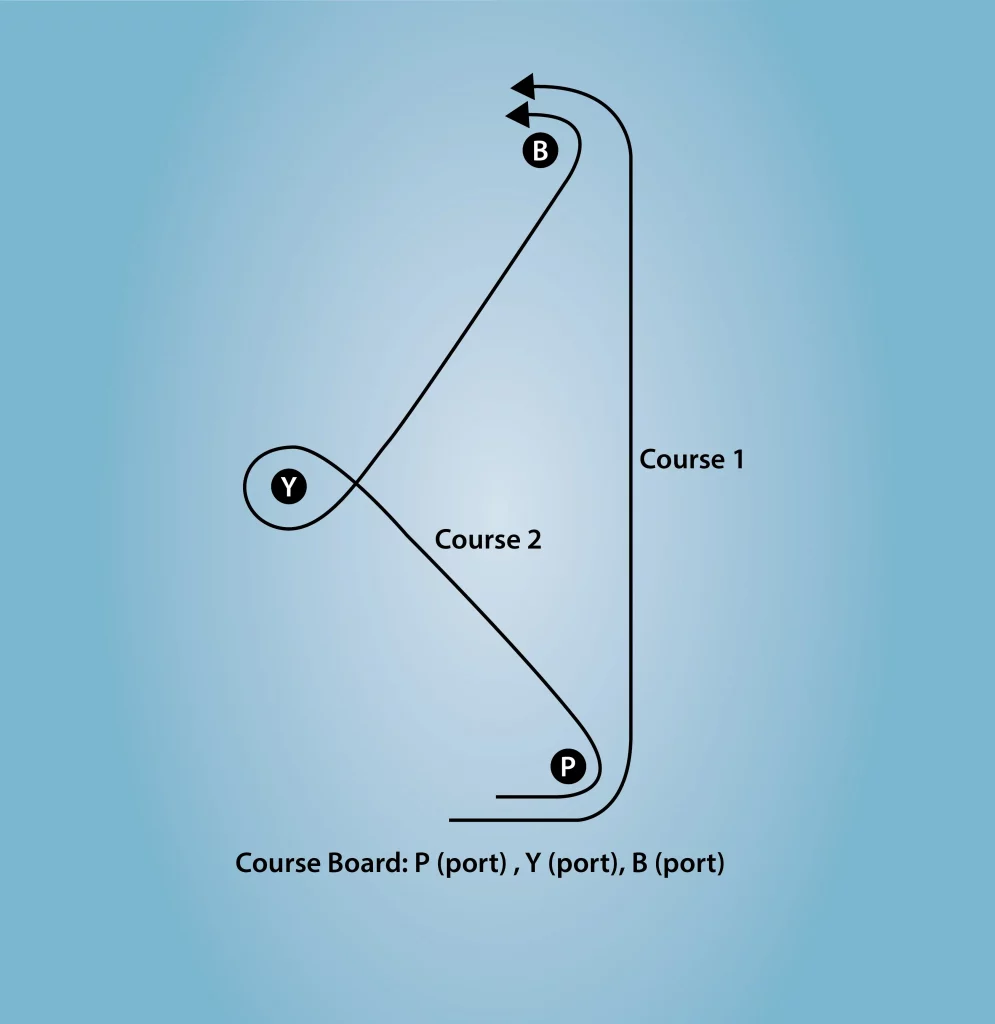Contact us
Please complete the form below and a member of staff will get back in touch with you.
I have been troubled by one aspect of the Racing Rules of Sailing for a while and, when it came up in a course set at Draycote recently, I was prompted to consult a higher authority.
One Sunday the race officer set a course including the marks P, Y and B all to port. Apparently, some sailors chose to ‘ignore’ Y as, in going from P to B, they would have left Y to port (course 1). That’s what I understood used to be correct. It passes the ‘original’ test of the definition of ‘sailing the course’ which describes:
(b) a string representing her track until she finishes, when drawn taut,
(1) passes each mark of the course for the race on the required side and in the correct order

But others who, perhaps like me, think they take note of recent changes to the rules, looped round mark Y, leaving it to port (course2). They would have quoted the newer, next part of the definition to justify their course:
(2) touches each mark designated in the sailing instructions to be a rounding mark
While course 1 passed the ‘required side’ test, only course 2 passed the ‘touch’ test.
My initial conclusion was that only course 2 was the correct course but, as I said, I was troubled by this, so I consulted my brother who is a senior International Judge and responsible for training new International Judges – some of you may remember the rules talk he gave at Draycote a few years ago.
His conclusion was actually that both courses were correct!
Why? Well, I, like others, hadn’t spotted the subtlety in the ‘touch test’ clause. It states: ‘each mark designated in the sailing instructions to be a rounding mark’. Our Sailing Instructions make no reference to any mark being a ‘rounding mark’ and therefore the ‘touch test’ does not apply. Course 2, he argued, would also pass the ‘required side’ test.
The person who asked me about this then expressed an assumption that every mark was a rounding mark. But you need to think away from Draycote. If, for example, there is a mark indicating a danger or prohibited area, a course may require you to pass one side of it, but the last thing it would want you to do is to loop the mark!
Clearly looping the mark is potentially dangerous if done in the vicinity of other boats, so is to be avoided. To avoid any confusion, it is best for race officers to avoid marks that can be ‘ignored’ in the course.
Jeremy Atkins
Please complete the form below and a member of staff will get back in touch with you.